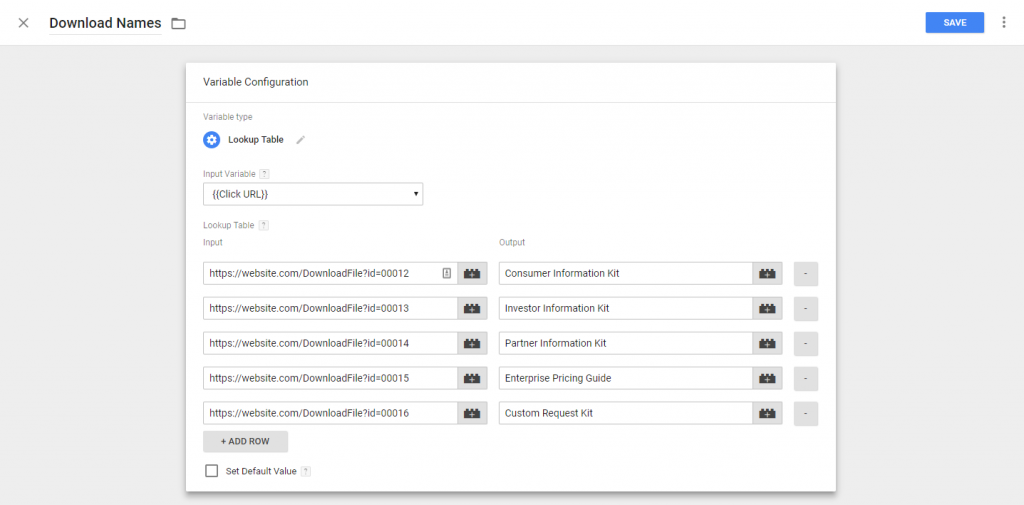Top 5 Reasons to Use Google Tag Manager
 When we discuss tracking the performance of digital marketing efforts, the word ‘easy’ rarely escapes our collective lips. Depending on a client’s needs, we might wind up with a bevvy of conversion points, multiple View States, customized Advanced Segments of data, or a baker’s dozen of Data Studio dashboards.
When we discuss tracking the performance of digital marketing efforts, the word ‘easy’ rarely escapes our collective lips. Depending on a client’s needs, we might wind up with a bevvy of conversion points, multiple View States, customized Advanced Segments of data, or a baker’s dozen of Data Studio dashboards.
Developing meaningful analytics requires a great deal of forethought.
At Arc Intermedia, we do not deal in out-of-the-box data tracking. Everything is tailored to specific marketing goals, which vary wildly from client to client. Objectives are also subject to change over time, and performance tracking must be flexible enough to adapt.
Very little about data tracking is easy. But Google Tag Manager (GTM) is changing that. Here are five ways that using Google Tag Manager can make your life (or at least your analytics work) much easier.
1. Easy On-Click Event Tracking
In a traditional Google Analytics (GA) setup, to track a specific event such as a button click you would need to add a bit of JavaScript to the page in order to send ‘onClick’ data to the reporting system. For multiple on-click events, this can be time consuming and add extra code to the webpage.
Google Tag Manager’s auto-event tracking feature removes the need to manually tag each link you want to track. Instead, you can use GTM to define rules that target links by attributes that are already on the link or by using a naming convention common to multiple links. All this is handled visually through the GTM interface, which allows you to wire up specific Variables, Triggers, and Tags.
This means that we can set up multiple On-Click Events for clients in a matter of minutes with no need for coding. And we can reduce the client’s dependence on Success pages to track form submissions as Destination Goals in GA. That means fewer pages to exclude from indexation and a cleaner overall site structure.
2. Easy Implementation
GTM significantly speeds up the setup process for all types of data tracking, and its flexibility allows us to respond rapidly when changes or new tags are needed. Marketers can make changes to performance tracking without the need for web development work, reducing labor costs and removing menial tasks from the development workflow. And due to the intuitive design of the GTM interface, coding knowledge is no longer a requirement to make such changes (although it does help).
Additionally, GTM debug options and version control make it easy to test tracking changes and revert to a previous iteration if necessary.
3. Easy Integration
While I may occasionally curse at Google for changing the rules (and rendering articles like my Meta Description Shop Talk completely obsolete), Google’s performance tracking ecosystem is simply incredible. Google Analytics, Google Tag Manager, and Google Search Console work together so masterfully that they’ve become our recommended approach for new clients. And we use them extensively.

Lookup Tables are, perhaps, my favorite point of integration between GTM and GA. For example, some clients have nondescript URLs for important On-Click Events, like download links (example: https://website.com/DownloadFile?id=00012). We can use GTM to create a Variable Lookup Table for such URLs to rename them something more recognizable when we look at the data in GA. The reported data appears cleaner, and the Lookup Table construction can help reduce the number of Event Tags needed for full data tracking.
Another benefit: integrating GTM will also help speed up your site. Not only does GTM reduce the amount of tracking code needed on-page, it loads asynchronously. This means the rest of the page will load separately. This can significantly improve Page Speed, which is an increasingly important factor in optimization.
4. Easy Consolidation of Third-Party Marketing Pixels
GTM can reduce the amount of tracking code needed on-page, which is especially useful for clients using AdWords or any other type of digital advertising platform including Facebook. All of these systems require various hardcoded elements or conversion pixels to be present on page, which can add a lot of messy JavaScript to the source code.
Now you can house all your third-party tracking elements within GTM. You can view and control all your digital advertising components in one place. You can deactivate or delete its pixel directly in GTM once a digital campaign runs its course. Or you can add new third-party marketing pixels as needed. There’s even built-in tracking for AdWords.
5. Easy Updates

Since modifications can be done directly through its interface, GTM makes enhancements to existing websites a snap. Not only does GTM make it easy to layer in new ways to track performance, it also sets the website up for easier analytics upgrades in the future. Since the GTM tracking code is already on each webpage, if and when Google roles out the next great analytics update, you can switch to the most current version with a few clicks in the GTM interface.
At Arc Intermedia, it’s now standard procedure for us to upgrade any client with a Classic Google Analytics tracking code to Universal Analytics through GTM implementation. This gives them the additional flexibility of GTM, the added functionality of Universal Analytics, and an easy path to analytics upgrades in the future.
Bonus! It’s Free

While the above reasons make a strong case for using GTM, the price tag should convince any remaining nonbelievers. By using the Google Analytics-Tag Manager-Search Console trifecta, you can have one of the most powerful performance data sets available at your fingertips for no money.
To review, GTM will save you time, reduce your development costs, load your website faster, and provide you with more robust performance data – all while costing you nothing. The only limit to the system is your creativity.



